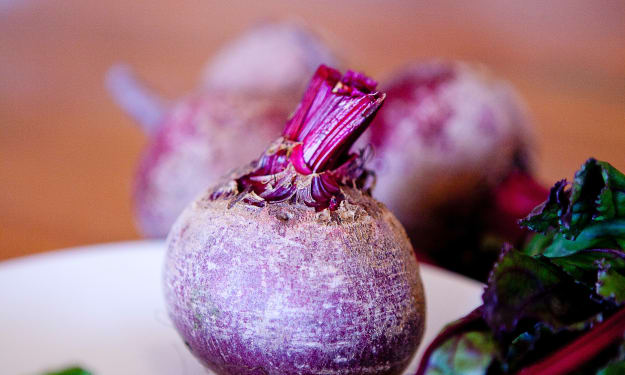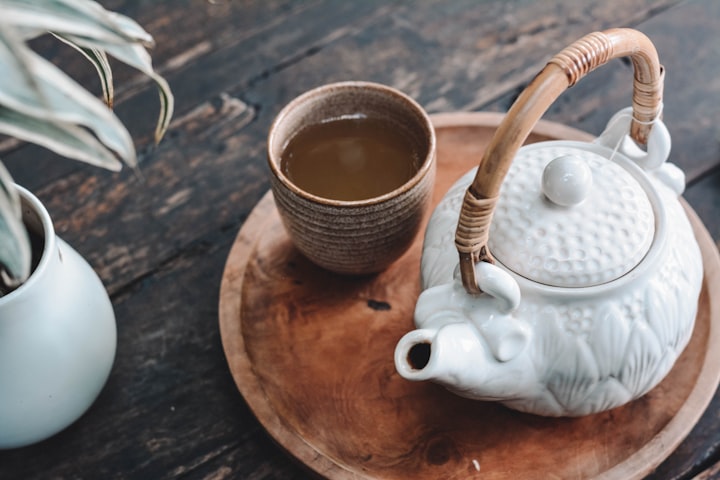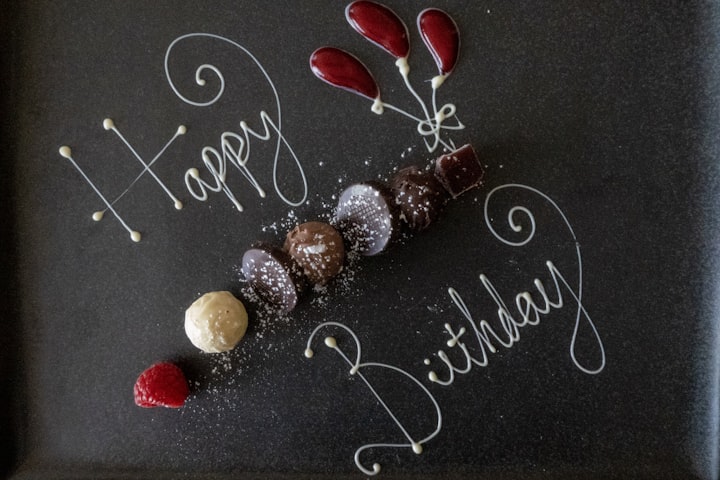A Long Piece About Mushrooms
There's food in them thar hills!

This article is partially about foraging for and consuming wild mushrooms. Under no circumstances should this article convince you to consume any wild mushrooms without first seeking out the advice of an expert and using their help to positively identify any edible mushrooms you may pick. Mushrooms can and will kill you and if you have any doubt as to the species of mushroom you have collected, err on the side of caution and DO NOT CONSUME THEM. That being said, please enjoy this piece and happy hunting!
I am a convert to the world of mushrooms. I despised them as a kid where the texture of the three types of mushrooms I could get at my local supermarket ranged from shoe leather to slime when cooked. At the time, I didn’t know that it wasn’t so much the mushroom’s fault as it was that of the cooks (sorry mom and dad). Over time we all got better at cooking, but the usual suspects of white button, cremini, and Portobello mushrooms never much did it for me. They never really belonged in salads, and they were almost always cooked too long with caramelized mushrooms after being washed in the sink. As I have since learned, almost all of these are cardinal sins.
My change of heart came in a rather far-flung locale, somewhere in the patchwork of limestone mountains and rice paddies between Mt. Fuji and Tokyo. I wound up doing pretty okay my first year of college and was invited to fly to Tokyo as an “Ambassador of Friendship” for my college and the United States. There were somewhere near 50 of us on the trip, piled into two buses that were, I shit you not, equipped with karaoke machines. Fortunately, we arrived around lunchtime, too early and too sober to take a crack at Celine Dion or Maroon Five. It was just a roadside waystation with some shops and a restaurant, and like any Gaijin, I wasn’t expecting to be blown away. Of course, this being Japan where people are deadly serious about food, I was just, like, so wrong. Placed before each of us were simple clay pots with some Japanese writing glazed into the side. I can’t tell you what the writing said (I really ever only learned the characters for Wi-Fi), but I can say that packed into each pot was steaming broth full of braised chicken, vegetables, with shitake and enoki mushrooms. At that point, I was still avoiding mushrooms like the plague, but I was just about as far away from home as I could get on this planet and thought what the hell, I’ll try it. They were good. Like really good. I wasn’t going to ask my neighbor if they were going to finish their commemorative clay pot, but I was damn sure going to finish mine.
Up to that point, I literally never tasted mushrooms in soup other than Campbell’s cream of mushroom. They were meaty and savory, while still holding onto something delicately their own. Like I said, I wasn’t going to mug anyone for another taste, but that singular meal set some wheels in motion. About a year later, a book sent to me by the father of an author, both named Langdon Cook, only stoked that passion. Langdon the younger is a food writer and author based on the west coast where mushrooms are big business, drawing tens of thousands of pickers each year. I received a copy of the book The Mushroom Hunters from Langdon the senior, a friend and fellow trustee from Connecticut who instantly had me pegged for an outdoorsman from the get-go (I have a beard and wear flannels and boots, it wasn’t a shot in the dark). I pretty much inhaled the book, which would, as a point of pride, help me meet my wonderful girlfriend, a fellow budding mycophile. While Langdon the younger was familiar with West Coast mushroom picking, my native New Hampshire is also ripe for the picking when it comes to mushroom as well over 80% of the state is covered in forest, much of it old growth, making it a perfect place for finding mushrooms. The combined influence of the Langdons Cook sent me into the forests and fields of the state in search of free food, the natural prey of a college kid. That is, if I could find some without dying, of course.
Mushroom foraging as a hobby has netted me some weird looks, and understandably so. It’s kind of a crunchy thing to do in a world where you can just go to the grocery store and pick up a sandwich bag of dried morels for $20. Dried mushrooms are great, don’t get me wrong, but there are types of mushrooms that you literally cannot get in stores. Mycology, the study of mushrooms, is still a budding science where information is coming out nearly daily, and as such, we haven’t figured out how to grow mushrooms all that well yet. Sure, we can get oysters, beech, and sometimes even maitake depending on the season, but the vast majority of mushrooms are still too expensive, too delicate, or too unknown to make commercial mycoculture viable in 2018. Plus, when it comes to foraging, mushrooms are devilishly hard to identify. At different points in a mushroom's life cycle, a poisonous mushroom may look like an edible one and vice versa. A combination of expert advice, cross-section examinations, spore prints, and many other means of identifications are vital to positively and safely identify what is edible from what is Hershey-squirts-to-organ-failure-poisonous. The best way to stay safe is to not overstep your abilities and make sure your doubts are in charge while picking. Taking a specimen to an expert can help you know if you have Wednesday night’s dinner growing in your front lawn or if your family should start writing your obituary now. I still keep to what I know, mostly giant puffballs, hen-of-the-woods, morels, and chanterelles when I can find them. Keeping that information in mind, I let my culinary side play fast and loose when I know I’ve got something safe on my hands.
One of my go-to recipes is a roasted chanterelle salad. Chanterelles grow across the United States and much of Europe and as the podcast Gastropod pointed out, nobody much cared for them in States until recently when Americans started sending mushrooms to Europe. That being said, chanterelles aren’t cheap, so pick them if you can, but towards the end of the summer, you can find them in grocery stores. Here’s what you’ll need:
- 1 lb of chanterelles, brushed clean, not rinsed, with the top layer of stems shaved off
- 2 small shallots, diced
- 2 tbsp Thyme leaves
- 1/8th cup roughly chopped parsley
- Salt to taste
- 1 tsp white pepper
- 3 tbsp olive oil
- 2 tbsp sherry vinegar
First things first, clean your lil’ guys. Brush off the dirt instead of rinsing because the chanterelles will sop up the water and become mushy while they cook, which is a crime to do the fantastic texture of chanterelles. Shave the top layer off the stems as they’re generally too chewy to enjoy. Preheat your oven to 350 degrees. If your chanterelles are of varying sizes, halve the big ones and leave the small ones be. Put the mushrooms into a large bowl along with your diced shallots, thyme leaves, olive oil, salt, pepper, and sherry vinegar. Toss them together until they’re evenly coated, then spread them onto a baking sheet, spacing them evenly. Pop them into the oven at 350 degrees for about 15 minutes or until just browned around the edges. Take them out, scoop mushrooms into a clean bowl, then add parsley to mushrooms and toss. You can serve the salad while it’s hot, but it’s honestly even better cold the next day. The flavors come together fantastically and this mix of the umami mushrooms, herbs, salt, and a touch of tartness from the vinegar to the point where they don’t make sense. It’s one of those occasions where 1+1=3, and I make this recipe whenever I get my hands on chanterelles. A goal of mine this year is to combine chanterelles, brook trout, and wood sorrel, to make something local, creative, and delicious, and since they all grow in the same habitat, you could even cook them together in the woods!
Another great recipe I fall back is a hen-of-the-woods stuffed roaster hen. I have a friend who more than generously gifted me around 4 pounds of hen-of-the-woods, a wild saprophytic mushroom that grows on dying oak trees around here. She hasn’t keyed me in on her spot, but after $80-ish dollars of free mushrooms, I’m not going to look a gift mushroom in the mouth, or spores, or whatever. After a few brews, I had a roaster kicking around my fridge and was feeling audacious, and was looking at the chicken-y mushrooms and chicken and had a tipsy epiphany. Slapping the two together is like having orange in the shower for the first time (just trust me, do it for the self-care). Here’s how you do it/what you’ll need:
- 4 lbs roasting hen
- 1 lb hen-of-the-woods mushrooms, brushed clean and separated from the woody stem
- 3 garlic cloves, smashed
- 4 sprigs thyme
- 3 sprigs rosemary
- 1 lemon, quartered
- Salt and pepper to taste
To start, I’m sorry for making you clean these. Hen-of-the-woods are Sisyphean when it comes to cleaning, but I swear they’re worth it. The good news about these is that you can use water because they’re going to be stuffed in the chicken anyways. I find the spray-hose on your sink (Is that what it’s called? Does anyone know? Please help?) works the best. Loosen the skin around the breasts of your bird with your hands, you won’t need a knife; start around the tail cavity and work your way in. From there place your three smashed garlic cloves under the skin, and if you’re feeling adventurous, a few feathers of your mushroom. Putting it just under the skin puts in contact with the most flavorful part of the bird and marries the flavors together so well that you’ll never let those few mushrooms make it to the table. Take the rest of your mushrooms and place them in the cavity along with your herbs, and 2 quarters of lemon. Now, massage your salt into your bird. That’s not me using my thesaurus to stretch this article. Massage your salt in; doing so helps draw out the moisture from the hen’s skin, making the skin crispy as hell. Put your bird into a ceramic or metal roasting pan along with your remaining two quarters of lemon. Put it into an oven preheated to 350, uncovered, and roast for 1 ½ to 2 hours, or until the meat in the breast next to the bone is 160 degrees. Remove it from the oven and let it rest for 15 to 20 minutes. That’s also a big deal. If you want your chicken to give you cotton mouth, go ahead! Dig in! If you can wait, your juices will settle into your bird and it’ll be incredible. If you feel particularly crafty, take the pan drippings from the bird and the skeleton of the bird and turn it into a stock for stupidly flavorful and complex soups.
I’ve one final recipe idea, but here’s the thing: I don’t have a recipe yet. This is an aspirational dish (because I’m poor), but when I have the money to buy it I’m going for it. I love aging things, as my piece on beets hints at. I am also impatient. Finally, I love using traditional ingredients in a way that hearkens back to its beginnings and also creates something entirely new. That being said, I am dying to make a koji-aged steak. Koji is pretty much the national ingredient of Japan as it’s used to create miso, soy sauce, and sake. It also turbo-dry ages a cut of meat. Koji, a fungus that produces enzymes that break down, proteins, lipids, and complex sugars, can do what a 45-day dry age does in 48 hours. It softens even lean, tough cuts into something almost every chef would throw onto a menu and imparts a nutty sweetness that pushes the cut past badass and into hardcore territory. You can order Koji on Amazon and aside from meat, it has a bevy of uses (like I said, miso, soy sauce, sake). Apparently, all you need to do is take your koji, throw it into a food processor until it’s pulverized and then rub it into your steak. Put it on a rack above a jelly-pan roll and leave it in your fridge for two days uncovered. At that point, it’ll look like a science experiment (specifically white fuzz), but you’ll wash it off before you cook it anyway. Pat it dry, and from there on out, do what you do! But please, you’ve put a lot of effort into your steak, so don’t muck it up.
I love me some mushrooms. This will not be my last post about them, mark my words. I hope you get the chance to learn about mushrooms around you and try these ideas out. They’re pretty killer. I hope you love them, too. Now, go eat something good!
About the Creator
Zach Grattan
There’s a story in every dish, but most people find it kind of hard to listen with their tongue.






Comments
There are no comments for this story
Be the first to respond and start the conversation.